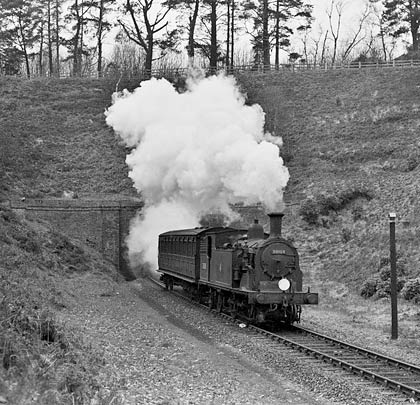Midhurst Tunnel
Midhurst Tunnel
















The London Brighton & South Coast Railway opened its line from Three Bridges to Horsham in 1848. Under the auspices of the Mid Sussex Railway, this was extended to Petworth in October 1859, only for the LB&SCR to absorb it a year later.
On 15th October 1866, the Mid Sussex & Midhurst Junction Railway inaugurated a further extension through to Midhurst where it made an end-on junction with a branch of the London & South Western Railway, although the connection was used for wagons only – passengers had to walk to the adjacent L&SWR station for trains on to Petersfield. Again the LB&SCR assumed ownership of the extension, acquiring the MS&MJR in 1874.
Located south of the town centre, the line’s major engineering feat was the 276-yard Midhurst Tunnel, taking the line under the A286 on a curve of around 30 chains radius. It suffered a partial collapse during construction, inevitably delaying completion of the work.
The east portal is located 100 yards west of Royal Oak Bridge on Oaklands Lane, and is built entirely in brick. Either side of the horseshoe-shaped entrance are buttresses, with curved wing walls beyond them. Running above are two string courses and a low parapet. The west portal is similarly constructed.
Inside, the lining – which has suffered localised spalling – comprises five brick rings. Refuges served the line’s platelayers, offering a safe place to retreat when a train approached on the tunnel’s single line.
Closed on 12th October 1964, the western entrance is now boarded up and flats built on the approaches, site of Midhurst’s former station. Inspections continue to be carried out annually by the tunnel’s owner, British Railways Board (Residuary), identified on its inventory as structure number PSM/12.







